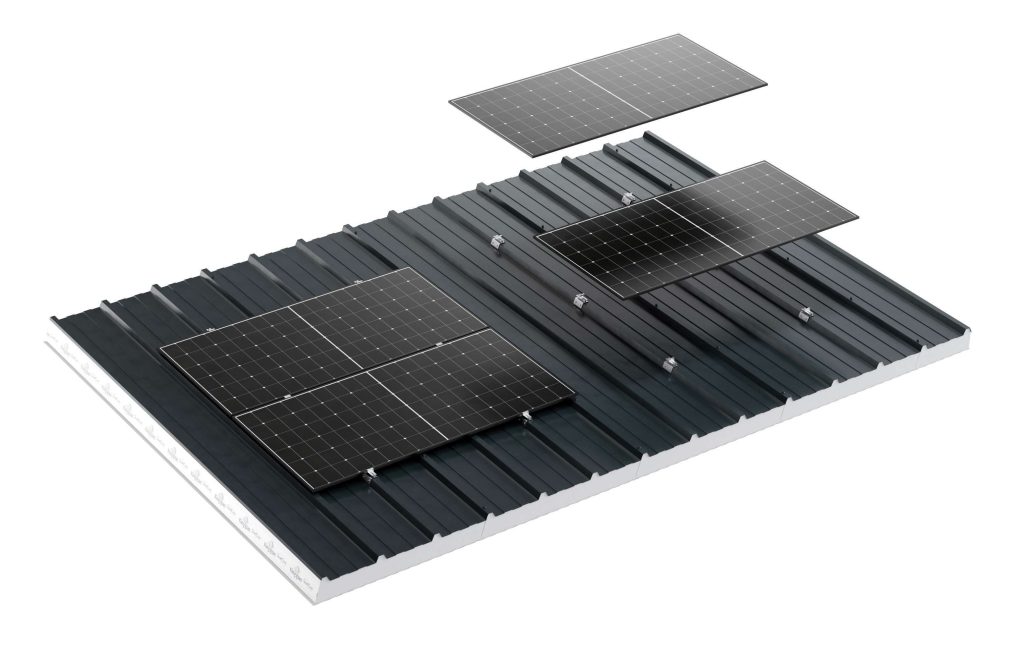
IN PRACTICE WITH… PROCTOR & MATTHEWS ARCHITECTS
Stephen Proctor and Andrew Matthews at PROCTOR & MATTHEWS ARCHITECTS talk to Denise Maguire about low rise, high density housing and applying their expertise to an Irish contex


You spoke at the RIAI’s National Housing Conference recently. What were some of the topics discussed at the event?
Stephen: A lot of the conversation centred around creating low rise, compact developments with increased density and the challenges associated with delivering housing like that. Developments of that nature require a different kind of typology, one that also takes cars out of streets and creates a more humane environment.
Proctor & Matthews is known for its low rise neighbourhood design and an example of that would be Great Kneighton. With your projects in Ireland, are you trying to replicate it?
Stephen: We’re currently working with Glenveagh to try and unlock this whole issue of how you create liveable environments and places with a sense of identity, but which also deliver on density. The team at Glenveagh came over to Cambridgeshire to get a sense of what we designed at Great Kneighton, which is made up of 40% apartments and 60% large family homes. Forty percent affordable housing is also included. Certainly with the clients we’re working with, I think one of the issues they’re facing is around the difficulty of delivering density without building high rise apartments. We’re interested in the idea of delivering more lower rise family homes without the need to rely on apartments to make up the densities. For us, it’s about looking at different house types that can be assembled in several different ways.
Great Kneighton was completed in 2014. Why do you think there’s still so much interest in it?
Andrew: I think it’s partly because it’s been lived in a long time. It’s maturing really well. We were there last week actually, with a group from Oxford University, who picked up on the importance of landscape in the streets and how the spaces nurture that idea of social interaction. Quite often these things get worse with age, but not in this case. In Ireland, substandard house types mean that typically you have to park your car on the forecourt in front of the house and then squeeze past to get to your front door. When you look down the street, all you see is perpendicular parking as far as the eye can see, with rarely a tree in sight.

How did the concept for Great Kneighton come about?
Stephen: We had quite an enlightened housebuilder client, which definitely helped. He was really pushing the boat out in terms of creating private amenity space on more than one level. For example, some time ago we built houses with no ground level private amenity space at Great Kneighton. Instead of ground level space, they have three upper level decks. At the time, the estate agent said they would be the last to sell, but actually they were the first to sell because they suit sharers and downsizers really well. We also designed a series of courtyard houses with gardens on the ground floor and an upper terrace. Those typologies allowed us to increase density and that’s something that we’re bringing to the Hollystown development for Glenveagh and indeed for other projects that we’re working on with the developer.
Do the projects with Glenveagh fit into that idea of low rise, high density?
Andrew: Glenveagh doesn’t want to build housing that there’s no demand for, just to meet density. The team there know that careful design plays a crucial role. Glenveagh also commissioned quite a big series of focus groups across different age groups to see what people thought a new neighbourhood should be. That has really informed the work that we’ve been doing in Ireland. Future residents want the type of neighbourhoods their parents and grandparents had – places where they can meet and interact with their neighbours. There’s an emerging demographic that’s demanding a different kind of product; these people are much more switched on to sustainable living practices. It can’t be just business as usual because the same old type of housing doesn’t appeal in the same way to a younger buying public anymore.

What’s the demand for housing like in the UK?
Stephen: In terms of numbers, we still have big targets to meet – 300,000 homes a year. There are strong similarities there with Ireland but what I find interesting is that relative to Ireland’s population, your target numbers for delivery are more ambitious. There are also similarities in terms of trying to move towards a more compact housing model and using the land more economically.
Andrew: The other similarity to the UK is the concentration of a disproportionate amount of the Irish economy in Dublin. That’s something that government needs to tackle because there’s an amazing array of cities and towns across the whole of Ireland, all of which could support housing growth in quite a compact way. We were in Limerick recently, an amazing place with an area around the Docklands that hasn’t yet been developed. The opportunities to build within and around existing settlements are immense.
Can you tell me about the Irish projects you’re working on?
Andrew: The development in Hollystown is just coming out of the ground at the moment. Just recently, we got to walk around the site and see the foundations, which was great. We’re also working on a housing scheme in Kilruddery in Co Wicklow that’s just gone into planning.
You mentioned the idea of ‘truly liveable neighbourhoods’ at the conference. What do you mean by that?
Stephen: It’s about analysing how a neighbourhood works and ensuring you’ve got interrelating public, communal and private amenity areas and a choice of places where you can meet and interact with your neighbour. I suppose it’s about building a community spirit. The fabric of a place can’t deliver that on its own, but it can help to nurture it.

How feasible is a development like Great Kneighton in Ireland?
Andrew: Well, I think it’s possible to take the strategy we employed at Great Kneighton and the concept for a liveable neighbourhood and translate them to an Irish context. Great Kneighton is very specific to Cambridge, which is a very unique place. We’re interested in the way you can translate those ideas and make them relevant to a specific context.
Stephen: If you look at ‘Lost Traditions’ by Niall McCullough and Valerie Mulvin, it shows you the evolution of very small scale, quite formal and often wide fronted housing. There’s something very distinct about that wide fronted house with a very accentuated entrance. Wide fronted homes that take cars off the street is something we’ve been looking at with Glenveagh. When it’s possible, we’ve got to integrate cars within the fabric of the neighbourhood, rather than leaving them to dwell in the streetscape. Instead of parking side by side, we’ve been looking at the possibility of parking in line. To access your second car, you have to get the first one out of the carport first. That tends to discourage unnecessary car journeys; it’s a bit of a hassle to get your second car out. If you can create a public realm that’s about people and not cars, you’re helping to create sustainable communities. It also futureproofs a development; if you’re building carparking within streetscapes and car ownership reduces over time, which it’s likely to do, you’re left with an environment that’s been designed for the car.
And that’s difficult to then change?
Stephen: Yes, very difficult. There are some developments in Europe that have car barns parked on the periphery of the town, with no cars within the town at all. I think a really nice medieval example of that is Delft in the Netherlands, a very compact city where people visiting have to park on the periphery and walk into the city. The public realm of Delft is all about people and cyclists and children.
You’ve previously talked about modern methods of construction. Do you think it’s a form of building that’s underutilised?
Andrew: There’s a big debate around the use of modern methods of construction for faster delivery of housing in the UK and in Ireland as well. I think the volumetric form of MMC is more challenging. We’ve often questioned the viability of full modular and the sustainability of carrying large modules around the country to build housing. It’s interesting that one of the most advanced house builders in the world using really modern technologies in Japan takes a component assembled approach to housing; they don’t actually do modular at all. For us, the way we like to think about context and housing that’s relevant to place and culture means that MMC is better applied through a panelised approach.
Thank you for speaking with me
Andrew & Stephen: It was a pleasure.
____________________________________________________________________________
Denise Maguire Editor of Irish Construction Industry Magazine & Plan Magazine
Email: denise@mcdmedia.ie WWW.MCDMEDIA.IE






